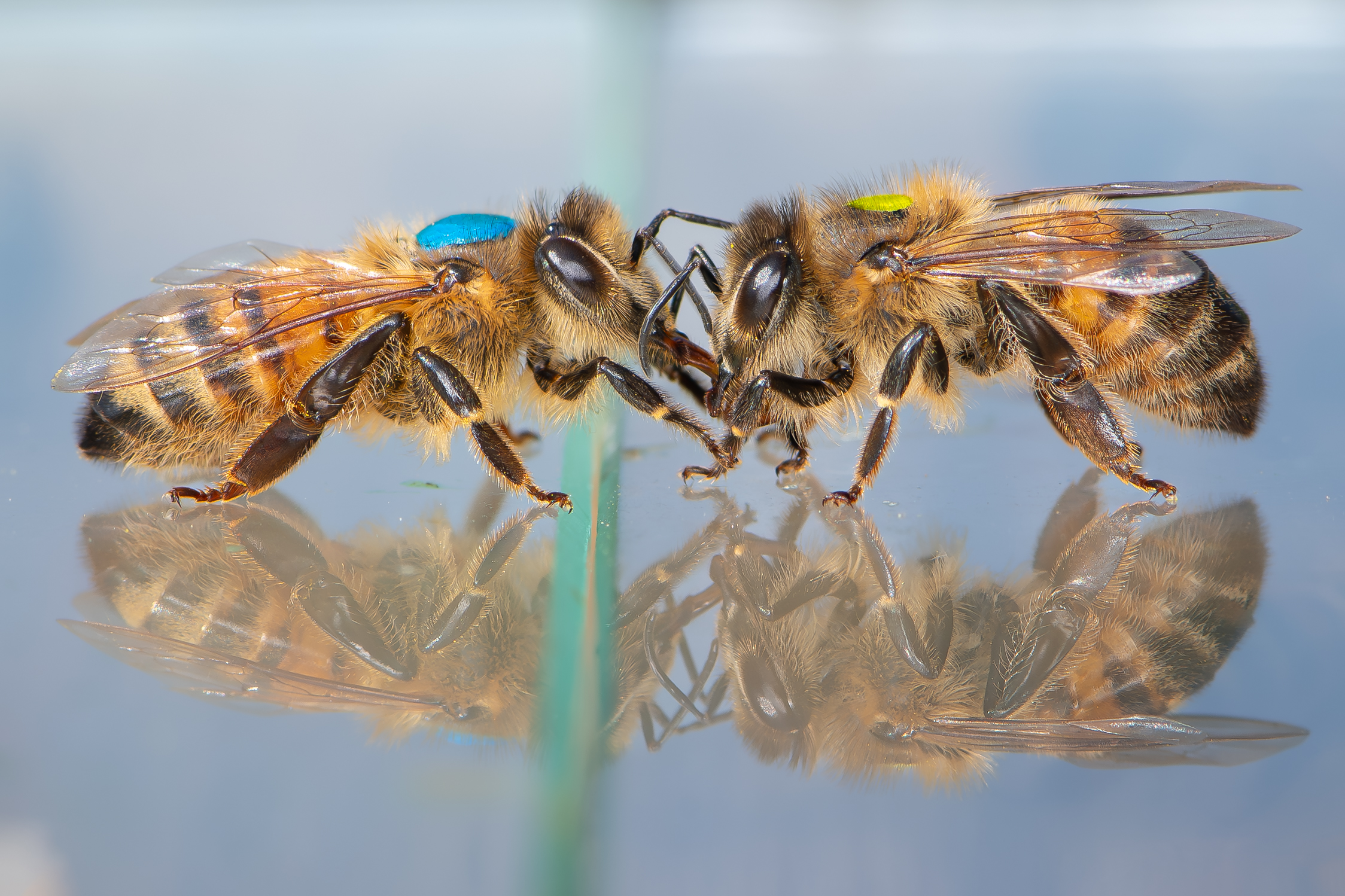At Honey Bee Research Centre, the summer of 2023 was the big time to investigate the foraging performance of honey bees treated by our protein diets to support immunity and fight against gut disease. More than 25,000 bees were painted on the thorax with different colours regarding the treatments. During observation, we can see a nectar forager (blue-marked bee) perform offering contacts to transfer the contents of her crop to a recipient nest-mate (green-marked bee) by the time she performs begging contacts. It is a part of trophallaxis behaviour performed among adult worker honeybees. Offering and begging contacts also involve the exchange of information on food resources. We expect that the performance of memory to the food source and returning home depends on the health of honey bees and can be enhanced by artificial protein diets.
